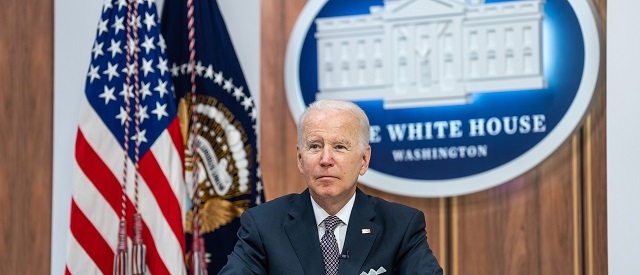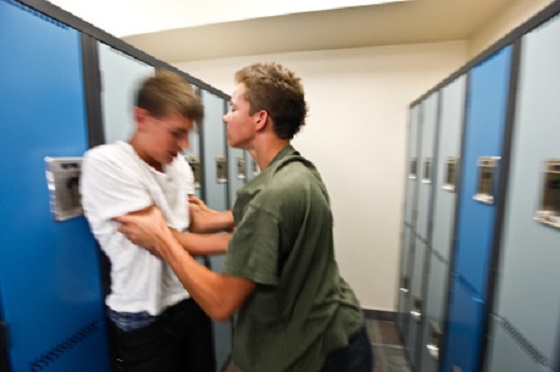Business
‘Got To Go’: Department Of Energy To Cut Off Billions Of Dollars’ Worth Of Biden-Era Green Energy Projects


From the Daily Caller News Foundation
By
“A lot of the push to keep these subsidies alive isn’t about good energy policy — it’s about keeping industries afloat that can’t meet reliability and affordability standards on their own.”
Energy Secretary Chris Wright said on Friday that his agency plans to cut billions in grant funds for Biden-era loans as the Trump administration conducts a review of the department’s $400 billion clean energy investments, a decision that energy policy experts who spoke with the Daily Caller News Foundation cheered on.
Before leaving office, former President Joe Biden squeezed $25 billion into the Department of Energy’s (DOE) Loan Programs Office (LPO) for various projects, with the bulk of the funds going toward renewable energy development. Wright’s newly announced plans to review and cancel a majority of the loans has the backing of several energy policy experts who told the DCNF that the LPO has stripped cash from taxpayers and contributed to U.S. grid instability.
“We’ve got a lot of reasons to be worried and suspicious about that,” Wright told Bloomberg in response to a question about the LPO. “Some of these loans will go forward, some of it, it’s too late to change course. A lot of them won’t go forward, but that’s a very careful review process that we’ve just put in place and just got a team to execute on.”
The LPO has previously dished out loans for nuclear energy, an industry championed by the Trump administration. However, among the loans finalized after the election were $6.57 billion to an electric vehicle manufacturing facility in Georgia and $289.7 million to solar energy development and battery storage in Massachusetts.
“[The LPO] may have been well-intended, but it’s morphed into a clean energy slush fund that dooms energy projects by making them tied to federal funding,” Gabriella Hoffman, the director of the Center for Energy and Conservation at Independent Women’s Forum wrote to the DCNF. “LPO investing currently undermines competition and market innovation of energy technologies. In the event it stays, however, it must be radically reformed to not prop up reliable energy sources like solar and wind.”
Notably, the rush to get these loans greenlit under Biden prompted a November inspector general report, which highlighted several potential risks to taxpayers related to the LPO, including concerns that the office may be moving too quickly to distribute funds, possibly at the expense of properly vetting loan applicants.
Other noteworthy projects approved under Biden’s watch included a $2.5 billion in loan for EV technology, 1.45 billion for a solar manufacturing facility in Georgia and $584.5 million for a solar photovoltaic (PV) system with an integrated battery energy storage system in Puerto Rico.
Founded in 2005, the loan office was created to help advance clean energy infrastructure, and it was increasingly active under the Obama administration, which approved a $535 million loan to Solyndra, a green energy company that collapsed just two years later. Activity slowed during President Donald Trump’s first administration, but under Biden, the office received a massive funding boost from Congress — totaling $400 billion — to support green tech firms.
“These past four years have been the most productive in LPO’s history,” LPO wrote in a fact sheet three days before Trump returned to the White House. “Under the Biden-Harris Administration, the Office has announced 53 deals totaling approximately $107.57 billion in committed project investment – approximately $46.95 billion for 28 active conditional commitments and approximately $60.62 billion for 25 closed loans and loan guarantees.”
“If the government’s going to use my money as a taxpayer through LPO investments, that money should be going to investments that actually provide reliable power,” André Béliveau, senior manager of energy policy at the Commonwealth Foundation told the DCNF. “A lot of the push to keep these subsidies alive isn’t about good energy policy — it’s about keeping industries afloat that can’t meet reliability and affordability standards on their own.”
While the majority of the LPO’s support in Congress and the White House has come from the left, some right-of-center organizations recently urgedWright on April 14 to “preserve” the LPO for the sake of “American dominance.” The organizations argue that the LPO plays a “critical role” in enabling “new nuclear power development.”
“LPO continues to play a critical role in financing infrastructure that enables new nuclear power development, revitalizes domestic mineral production, and modernizes both grid and gas systems — all central to the administration’s goals of lowering energy costs, reshoring manufacturing, and achieving energy dominance,” the letter reads.
Subsidizing energy projects that are not able to survive on their own in the free market is questionable, Amy Cooke, the co-founder and president of Always on Energy Research and the director of the Energy and Environmental Policy Center, told the DCNF. “The calls to eliminate it are well-founded, and at the very least, it should be dramatically reformed,” she said. “If the market isn’t interested in it, is it the responsibility of the Department of Energy to fund [these projects]?” she asked.
“We should be funding improvements for firming the grid and not arbitrarily add more intermittency,” Béliveau said in reference to wind and solar projects that provide less inertia — the grid’s ability to continue running smoothly after a disturbance occurs between energy supply and demand for the electrical grid.
“If it’s going to exist, then reforms need to make sure that we’re being good stewards of taxpayer dollars,” he added, pointing to natural gas and nuclear as options that could help “firm the grid.”
“The Trump administration’s version of energy dominance has created a source-neutral way of picking winners and losers,” he continued, noting that reliability, affordability and security are the priorities of the administration, as opposed to a climate-change centric approach to energy policy.
Trump declared a national energy emergency on his first day back in office and signed an executive order to boost domestic energy generation. He signed a series of other EOs within his first 100 days in office to speed up the permitting process and clear red tape for several industries including coal and critical mineral mining.
Alberta
Calgary taxpayers forced to pay for art project that telephones the Bow River

From the Canadian Taxpayers Federation
The Canadian Taxpayers Federation is calling on the City of Calgary to scrap the Calgary Arts Development Authority after it spent $65,000 on a telephone line to the Bow River.
“If someone wants to listen to a river, they can go sit next to one, but the City of Calgary should not force taxpayers to pay for this,” said Kris Sims, CTF Alberta Director. “If phoning a river floats your boat, you do you, but don’t force your neighbour to pay for your art choices.”
The City of Calgary spent $65,194 of taxpayers’ money for an art project dubbed “Reconnecting to the Bow” to set up a telephone line so people could call the Bow River and listen to the sound of water.
The project is running between September 2024 and December 2025, according to documents obtained by the CTF.
The art installation is a rerun of a previous version set up back in 2014.
Emails obtained by the CTF show the bureaucrats responsible for the newest version of the project wanted a new local 403 area code phone number instead of an 1-855 number to “give the authority back to the Bow,” because “the original number highlighted a proprietary and commercial relationship with the river.”
Further correspondence obtained by the CTF shows the city did not want its logo included in the displays, stating the “City of Calgary (does NOT want to have its logo on the artworks or advertisements).”
Taxpayers pay about $19 million per year for the Calgary Arts Development Authority. That’s equivalent to the total property tax bill for about 7,000 households.
Calgary bureaucrats also expressed concern the project “may not be received well, perceived as a waste of money or simply foolish.”
“That city hall employee was pointing out the obvious: This is a foolish waste of taxpayers’ money and this slush fund should be scrapped,” said Sims. “Artists should work with willing donors for their projects instead of mooching off city hall and forcing taxpayers to pay for it.”
Automotive
Supreme Court Delivers Blow To California EV Mandates


From the Daily Caller News Foundation
“The Supreme Court put to rest any question about whether fuel manufacturers have a right to challenge unlawful electric vehicle mandates”
The Supreme Court sided Friday with oil companies seeking to challenge California’s electric vehicle regulations.
In a 7-2 ruling, the court allowed energy producers to continue their lawsuit challenging the Environmental Protection Agency’s decision to approve California regulations that require manufacturing more electric vehicles.
“The government generally may not target a business or industry through stringent and allegedly unlawful regulation, and then evade the resulting lawsuits by claiming that the targets of its regulation should be locked out of court as unaffected bystanders,” Justice Brett Kavanaugh wrote in the majority opinion. “In light of this Court’s precedents and the evidence before the Court of Appeals, the fuel producers established Article III standing to challenge EPA’s approval of the California regulations.”
Kavanaugh noted that “EPA has repeatedly altered its legal position on whether the Clean Air Act authorizes California regulations targeting greenhouse-gas emissions from new motor vehicles” between Presidential administrations.
“This case involves California’s 2012 request for EPA approval of new California regulations,” he wrote. “As relevant here, those regulations generally require automakers (i) to limit average greenhouse-gas emissions across their fleets of new motor vehicles sold in the State and (ii) to manufacture a certain percentage of electric vehicles as part of their vehicle fleets.”
The D.C. Circuit Court of Appeals previously rejected the challenge, finding the producers lacked standing to sue.
“The Supreme Court put to rest any question about whether fuel manufacturers have a right to challenge unlawful electric vehicle mandates,” American Fuel & Petrochemical Manufacturers (AFPM) President and CEO Chet Thompson said in a statement.
“California’s EV mandates are unlawful and bad for our country,” he said. “Congress did not give California special authority to regulate greenhouse gases, mandate electric vehicles or ban new gas car sales—all of which the state has attempted to do through its intentional misreading of statute.”
-

 espionage1 day ago
espionage1 day agoFrom Sidewinder to P.E.I.: Are Canada’s Political Elites Benefiting from Beijing’s Real Estate Reach?
-

 Business24 hours ago
Business24 hours agoSenator wants to torpedo Canada’s oil and gas industry
-

 Bruce Dowbiggin24 hours ago
Bruce Dowbiggin24 hours agoFUBAR: How Trudeau & Trump Rewrote This Century’s Political Handbook
-

 Business2 days ago
Business2 days agoRFK Jr. planning new restrictions on drug advertising: report
-

 Alberta1 day ago
Alberta1 day agoAlberta’s carbon diet – how to lose megatonnes in just three short decades
-

 Energy1 day ago
Energy1 day agoWho put the energy illiterate in charge?
-

 espionage1 day ago
espionage1 day agoFBI Buried ‘Warning’ Intel on CCP Plot to Elect Biden Using TikTok, Fake IDs, CCP Sympathizers and PRC Students—Grassley Probes Withdrawal
-

 David Clinton1 day ago
David Clinton1 day agoWhy Are Ontario’s Public Schools So Violent?






